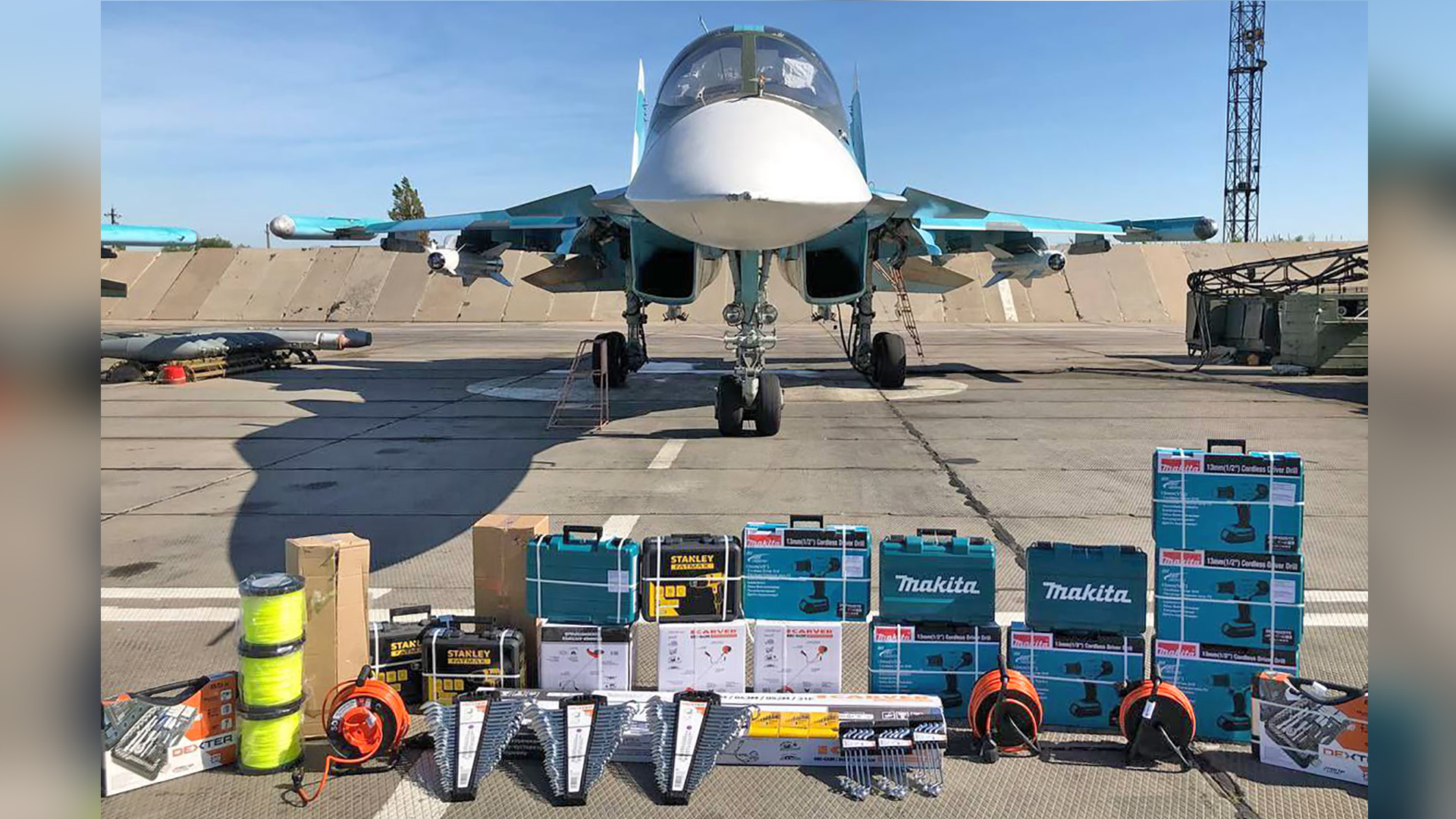Pictures have emerged online showing almost bizarrely mundane items that Russian forces participating in the conflict in Ukraine, especially combat aviation units, have apparently received through recent crowdfunding campaigns.
The images show a motley assortment of things one might buy at a hardware store, including power tools, wrenches, extension cords, and even an axe and weed hackers, among other things. One Russian Air Force squadron equipped with Su-34 Fullback combat jets received a pair of Chinese-made Hangcha-brand commercial forklifts to help move bombs and other ordnance around for loading onto aircraft. These are hardly the kinds of things one would expect to be in high demand by elements of a major military.
Now, it’s no secret that supporters of both sides of the conflict in Ukraine have been actively using crowdsourcing as a way to raise funds to buy various items to support the respective war efforts. One recent crowdfunding campaign in Lithuania raised nearly 6 million Euros, or around $6.4 million, to buy a Turkish-made TB2 armed drone for the Ukrainian military. Manufacturer Bayraktar subsequently donated one of these unmanned aircraft to the Lithuanian government to be transferred to Ukraine’s armed forces, with the understanding that 1.5 million Euros of the total that was originally fundraised go toward outfitting the drone and the rest be used to purchase humanitarian aid.
On the Russian side, by every indication, many ground units went into the conflict horribly underprepared. Citizens in Russia have since sought to fill various gaps, sending a wide variety of relatively simple, but important items to forces in the field, ranging from radios and night vision optics to medical supplies and foodstuffs. Small drones, which are being employed to great effect on both sides for surveillance and reconnaissance, are also being regularly crowdsourced for Russian forces.
There have been very reasonable questions raised already about what this says about the state of the Russian military as a whole, and just how useful much of this gear might be in actuality. For instance, transmissions through unencrypted commercial radios have proven to be vulnerable to interception and geolocation, allowing Ukrainian forces to gather useful intel or even target enemy units.
There is only likely to be more discussion now about what the state of the Russian military as a whole might be like if crowdfunding campaigns are being used to finance the apparent equivalent of a Home Depot shopping spree.
The forklifts turned munition transloaders are perhaps the least confusing item seen in the recent pictures. The U.S. military, among others, also employs commercial-type forklifts to move weapons and other equipment around air bases and other facilities, but typically not as part of the process of getting munitions directly uploaded onto aircraft. The pictures of the crowdfunded Russian forklifts show them being used to move bombs, already positioned in rows on the tarmac around aircraft waiting to be armed, onto purpose-built munitions handling carts.
The video below shows bombs being loaded on Russian Su-34 Fullback combat jets during an exercise in 2017.

Still, it certainly says something that even one frontline Russian combat aviation unit is apparently in need of relatively basic equipment to rearm its aircraft. If the items that are seen in the other pictures, including completely generic tools, truly reflect important necessities for Russia’s combat aviation squadrons, it can only further call into question how well equipped they are.
There is, of course, the potential that at least some of this simply reflects a disconnect between what crowdsourced funds are being spent on versus what Russian units are actually asking for. It’s hard to believe that a Russian aviation squadron would have put weed whackers high on its wishlist of things necessary to support the current war effort, but maybe airfield maintenance is an area they wish to focus on. Russia’s military airfields are notoriously austere compared to those in the west.
There is also a possibility that these pictures could show items donated by companies of various sizes who were acting out of a sense of national duty – or were even ordered to do so as part of a propaganda push – and simply sent whatever they had on hand. The Carver-brand weed whackers – garden tools also known as string trimmers or trimmers – that are seen in one of the images, for example, are made by a Russian company called Uraloptinstrument.
No matter what the explanation or explanations might be, the selection of items seen in these recent pictures still feels bizarrely random. Even if they were just meant to be for show and general propaganda purposes, and maybe not even donated by crowdfunders at all, they don’t seem particularly impressive in scale or scope.
Beyond that, the optics of either having a real need for these mundane items or of receiving donations that have little actual value are not great for the Russian military, whose international image as a formidable force has suffered significantly after three months of failing to make major headway in Ukraine.
Contact the author: joe@thedrive.com
